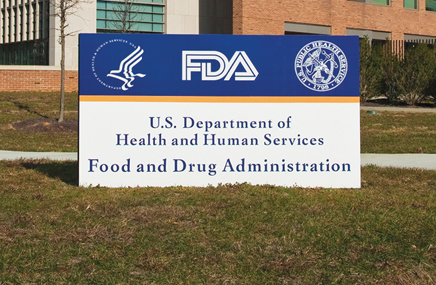With sequester cuts taking effect and no sign of a deal to end them in sight, FDA stands to lose 5% of its 2013 budget—though coming five months into the Federal fiscal year, it will feel more like 9%—and while the agency has said it has no plans at present for layoffs, it’s certain the approvals process will slow as the agency absorbs the loss.
FDA said in a statement: “A sequestration of the magnitude contemplated, and this late in the budget year, will have public health consequences for an agency that is already making every dollar count. At this time, FDA does not anticipate having to furlough our employees. Other internal measures to absorb the cuts due to sequester will be taken, including reducing travel and training.”
The agency said cuts would delay the regulatory policy and decision-making work of FDA Centers, curtail contracts and outside collaborations, impede pandemic preparedness and “affect our user fee programs, under which vaccines and antivirals are approved. We would not be able to undertake program activities that have already been specifically designated and paid for with user fees.”
The inclusion of user fees—which would make up $82 million of the $209 million sequester hit to the agency, according to Office of Management and budget figures—came as a nasty surprise. About half of that figure is fees to tobacco and generics companies, but PDUFA fees make up the rest, and as PhRMA said in a statement, “the arbitrary sequestration of prescription drug user fees” which by law can be used only to fund drug reviews “does nothing to decrease the nation’s deficit.” According to a recent BioCentury report, the White House is pressuring Congressional leaders to authorize FDA to spend those fees or to alter the sequestration to exempt user fees. For now, the agency is authorized to collect them, but not to spend them, and they won’t roll over like phone minutes if the sequester goes through 2013. Those funds could be made available in subsequent years, but that would require the authorization of a Congress always on the hunt for surplus budget to nip and tuck.
The drain on approvals might not be felt immediately, said Steven Grossman of Alliance for a Stronger FDA, who notes that the effects of the agency’s last cash crunch, in 2007-2008, weren’t felt for two years.
“When you have less people to do the work, they prioritize the reviews closer to approval,” said Grossman. “So in the short term, you might see it, but the time they’re putting into the front end of the queue means that that it’s taking months to get a pre-IND meeting instead of weeks.”
And the cuts would likely impact the agency unevenly, as departments with vacancies go understaffed.
“The fact that existing staff aren’t threatened with furloughs doesn’t mean there’s enough people to do the work,” said Grossman.
Last week, Alliance president Diane Dorman said in testimony to the FDA’s Science Board: “It is important to recollect that FDA is a staff-intensive organization. More than 80% of its budget is devoted to staff-related costs. Of the remainder, rent and utilities are fixed costs that must be paid first. There is little grant and contracting to cut.”
A White House fact sheet last month said: “The FDA’s Center for Drug Evaluation and Research (CDER) would face delays in translating new science and technology into regulatory policy and decision-making, resulting in delays in new drug approvals. The FDA would likely also need to reduce operational support for meeting review performance goals, such as the recently negotiated user fee goals on new innovative prescription drugs and medical devices.”







